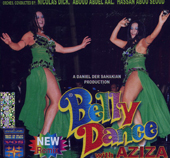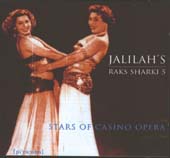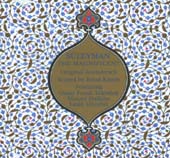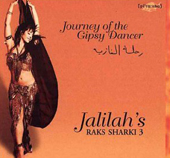Recent Posts
Five Middle Eastern Instruments That Every Serious Dancer Should Know How To Interpret
Posted by on
Music is the soul of Middle Eastern dance, and five major instruments define its composition. In order to present your best performance as a skilled dancer, it is important to know how to correctly interpret each instrument. (Please keep in mind that these are general guidelines and that there can be exceptions to any rules.)
OUD Like the piano in American music, the oud is the primary instrument used when composing Middle Eastern music. Characteristically, it produces a deep, mellow, plucked sound that offers a great deal of versatility. Listen for the oud's musical phrasing and mimic it in a traditional manner by executing small shimmies.
Good examples of the oud can be found by viewing or listening to:
CD: Belly Dance with Aziza (VOS10023)
DVD: Fifi Abdo, "The Egyptian Star" (FAPV1)

VIOLIN The violin is a "stretchy", soulful instrument. Generally, violin taxims are structured specifically for dancers. Think of internal movements such as undulations and figure eights when interpreting its melody. Any recordings by Abboud Abdel Aal, Georges Lammam or Rafic Hobeika (who used to play for Nadia Gamal) present prime examples.
CDs: Belly Dance with Farouk Salame and Abboud Abdel-Aal (VOS10007)
Belly Dance for Arabian Nights (AACD1)
Fyom Weleleh by Georges Lammam

KANOUN A plucked instrument that is difficult for musicians to master, the kanoun possesses the capability of sounding like more than one instrument. Since the kanoun's melodies are often vibratory in nature, keep your movements low in the hips, standing in place while following the kanoun's phrasing.
Good examples to reference:
CDs: Samasem presents Music for Oriental Dance, Vol. 2 (SCD01)
Spectacular Rhythms from the Middle East (VDLCD505)
Stars of the Casino Opera (PIR 1361)

DVD: Lucy and Dina (HMCPV02)
NAY The nay produces an airy, earthy sound. The nay player often "carries on a little conversation" with himself while playing. Your movements should follow the phrasing of the breath by listening carefully for it; rest briefly during a pause, then pick up the melody once it begins again.
Examples to study:
CDs: Suleyman the Magnificent (13023-2) or any recordings by Faruk Tekbilek
Egyptian Bellydance by Bashir Abdel 'Aal (MCE-EUCD2178)

ACCORDION Since it uses air to generate its sound, the accordion can have a breathy, yet vocal quality. Listen for its phrasing as it moves "in and out" of its tonality. Because of the accordion's unique character, a wide range of movements can be executed from slow undulating to more staccato hip responses.
Perfect examples to listen to:
CDs: Spectacular Rhythms from the Middle East (VDLCD505)
Belly Dance for Arabian Nights (AACD1)

Albums such as "Al-Hawanem", "Stars of the Casino Opera" and "Journey of the Gipsy Dancer" are great study guides that feature all of these traditional instruments. All of these CDs and DVDs are available on dahlal.com.

 Loading... Please wait...
Loading... Please wait...
